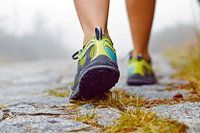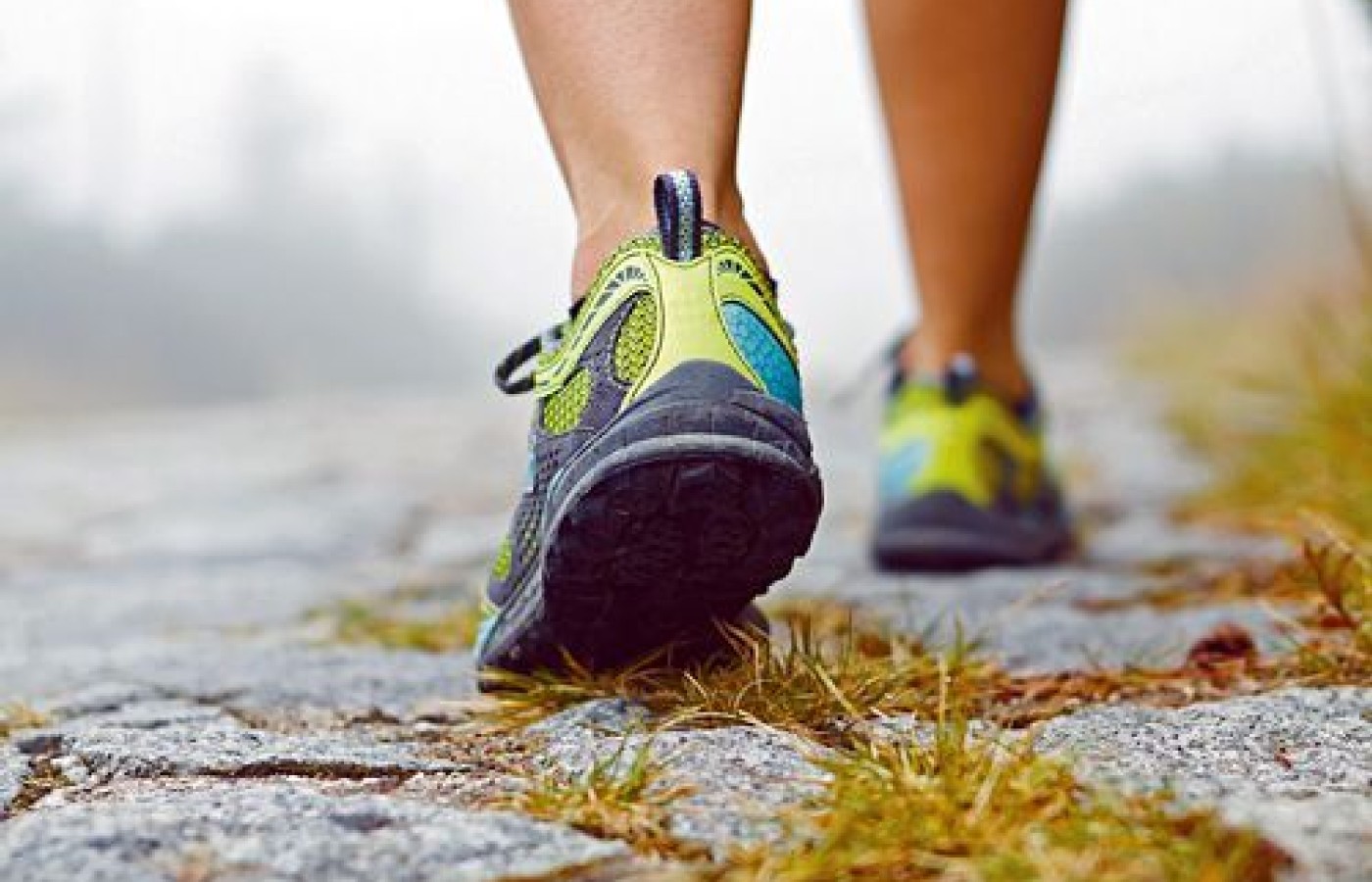New York's highest court of appeals has held that no-fault insurers cannot deny no-fault benefits where they unilaterally determine that a provider has committed misconduct based upon alleged fraudulent conduct. The Court held that this authority belongs solely to state regulators, specifically New York's Board of Regents, which oversees professional licensing and discipline. This follows a similar recent ruling in Florida reported in this publication.
Foot Stiffness and the High-Arched Foot
Many articles have discussed how excessive pronation and the loss of the foot's medial arch (flat foot) can negatively affect the mechanics of the lower extremities, as well as the pelvis and spine. However, too much arch can be just as much of a problem as not enough. In fact, an investigative study by Simkin, et al., conducted during a military basic-training session, found a much higher frequency of femoral stress fractures in recruits who had a cavus (high-arched) foot. The study concluded that this was because an elevated arch tends to transmit, rather than absorb, heel-strike shock, as does the foot with a normal arch.1
Whenever there is either too little pronation (as is found in fixed supination), or excessive pronation, the effects of impact loading are amplified. "A high-arched (cavus) foot with limited range of motion attenuates shock poorly and a hypermobile flat foot also does poorly on shock attenuation because of its function near the end of the range of motion."2 This helps explain how both types of foot dysfunction can contribute to musculoskeletal symptoms and injuries. In fact, a study by Dahle, et al., found that athletes with either excessively pronated or supinated foot types were significantly more susceptible to knee injuries than those who had a normal pronation mechanism to absorb shock.3

A 2004 paper dealt with the common problem of excessive foot flexibility and hyperpronation during gait.4 While less frequently found, foot stiffness and hypomobility (a lack of pronation, usually with a high arch and fixed supination) can also be the underlying causes of significant lower extremity biomechanical distress.
High-Arched Feet
Normal amounts of movement are necessary for biomechanical function during activities of stance and gait. Problems arise when there is too little or too much mobility in the foot and ankle. The foot with a higher-than-normal arch remains too rigid and inflexible during walking and running. This results in poor attenuation of heel-strike shock, much of which is then transmitted up the kinetic chain into the leg and hip.
Having a rigid, high-arched foot makes one susceptible to development of stress fractures in the sesamoids, calcaneus, femur and pelvis.5 This type of foot generally requires improved flexibility (mobilization, stretching) and stabilizing orthotics to help decrease shock at heel strike. A higher-than-normal arch can be a particular problem when there is significant asymmetry, especially if the other foot has little or no arch. When there are equal magnitudes of pronation and supination during standing and walking, rotational equilibrium results and no significant rotational velocity is imparted to the adjacent structures.6
The stress of impact while walking is also minimized when the foot pronates normally and the leg flexes to absorb shock. In normal subjects, the force of heel strike transmits a shock wave (a "transient") up the leg to the pelvis, the spine and into the skull. Within 10 milliseconds of heel strike, scientists studying normal walking recorded a .5 g impact at the skull.7 This is the equivalent of a 160-pound man being hit in the head by 80 pounds with each step.
Dr. Steven Subotnick estimates that running multiplies the impact of heel strike on the body by approximately three times (the "Rule of Three").8 A high-arched or inflexible foot can increase this normal stress in ranges that result in symptoms and pathologies.
21st-Century Studies
A growing body of evidence helps to explain why high-arched individuals (especially athletes) are reporting greater incidence of bone and joint stress injuries. For example:
Lower extremity stiffness #1. In a review of various published models of leg stiffness, Butler, et al., found substantial biomechanical evidence to support the concepts above. They looked at several methods for calculating the vertical and linear stiffness of the lower extremity during gait. These methods included measuring ground reaction forces, vertical trajectory of center of mass (using a force plate), and foot contact time, among other parameters. They identified a direct relationship between lower extremity stiffness and performance, as well as injury.9
Lower extremity stiffness #2. Using a combination of vertical loading rates and electromyographic data, Williams, et al., attempted to explain the differences in leg stiffness during gait between runners with high and low arches.10 They found that the support moment at the impact peak of the vertical ground reaction force was related to leg stiffness across all subjects. Specifically, "high-arched subjects were found to have increased leg stiffness and vertical loading rate compared to low-arched runners." The study authors also noted that the high-arched runners demonstrated both decreased knee flexion and earlier onset of vastus medialis muscle activity during the stance phase of gait.
Runners' injuries. Finally, in a retrospective study of running-related injuries, Williams, et al., found that athletes with high arches had different injury patterns when compared to those with low arches.11 First, injury laterality differed significantly between the two groups, with high-arched runners reporting more lateral injuries, while low-arched runners showed more medial injuries. Second, stress injuries to bone were more common in those with high arches, while the soft tissues were more frequently affected in those with low arches. And third, the high-arched runners had more lateral ankle sprains and iliotibial band problems, while knee injuries (especially patellar tendinitis and medial knee pain) were much more common in low-arched runners. Not surprisingly, 85 percent of all running-related injuries in the study occurred at the knee or distally.
Recovery Options
Patients with high arches should be fitted with individually designed stabilizing orthotics that have support for all three arches of the foot, especially the lateral arch. The orthotics should be fabricated from shock-absorbing materials designed to decrease the ground- reaction forces from heel strike through to toe-off. They should also encourage flexibility and mobility during gait. These components will help to reduce the injury potential that the rigid foot demonstrates.
In addition, rehabilitative exercise of the pedal foundation can help facilitate the proper use of affected muscle groups in a hypomobile foot. Surgical tubing (for stretch / resistance) is an effective and recommended device for re-educating stiff muscles and helping to relieve pain.
References
- Simkin A, Leichter I, Giladi M et al. Combined effect of foot arch structure and an orthotic device on stress fractures. Foot & Ankle, 1989;10:25-29.
- Subotnick SI. Forces Acting on the Lower Extremity. In: Sports Medicine of the Lower Extremity. New York: Churchill Livingstone; 1989:189.
- Dahle LK, Mueller M, Delitto A, Diamond JE. Visual assessment of foot type and relationship of foot type to lower extremity injury. J Orthop Sports Phys Ther, 1991;14:70-74.
- Hyland JK. Foot flexibility and hypermobility. Practical Res Stud, 2004;17(2):1-4.
- Giladi M, Milgrom C, Stein M, et al. The low arch, a protective factor in stress fractures. Orthop Rev, 1985:14:709-712.
- Kirby KA. Rotational equilibrium across the subtalar joint axis. J Am Podiatr Med Assoc, 1989;79:1-6.
- Light LH, McLellan GE, Klenerman L. Skeletal transients on heel strike in normal walking with different footwear. J Biomech, 1980;13:477-480.
- Subotnick SI, Op Cit:67.
- Butler RJ, Crowell HP, Davis IM. Lower extremity stiffness: implications for performance and injury. Clin Biomech, 2003;18(6):511-517.
- Williams DS, Davis IM, Scholz JP, et al. High-arched runners exhibit increased leg stiffness compared to low-arched runners. Gait & Posture, 2004;19(3):263-269.
- Williams DS, McClay I, Hamill J. Arch structure and injury patterns in runners. Clin Biomech, 2001;16(4):341-347.



